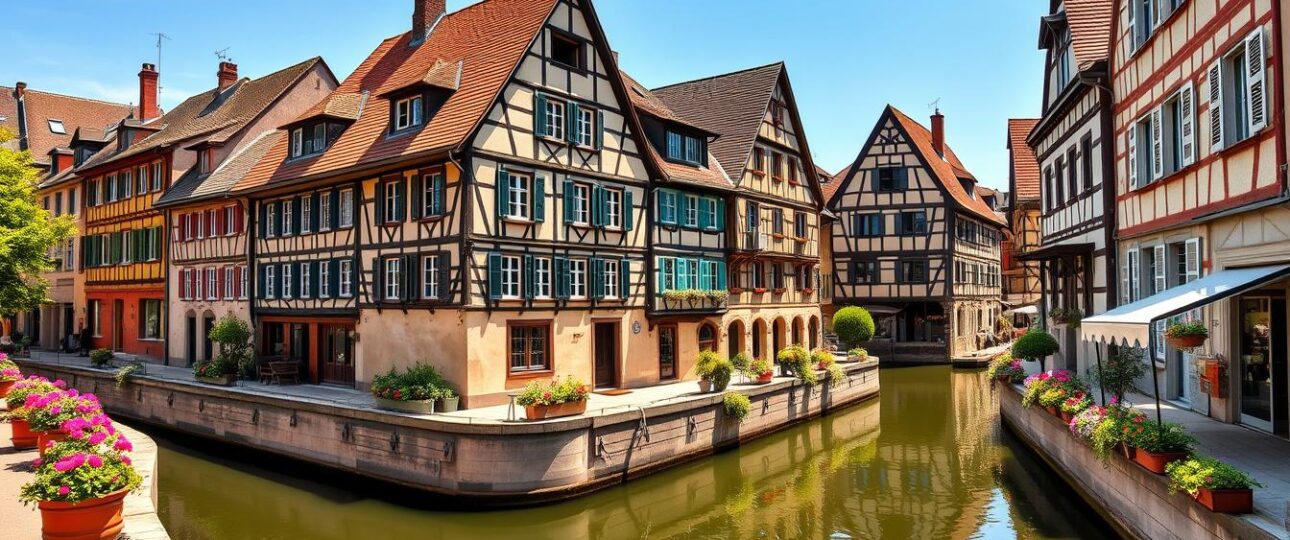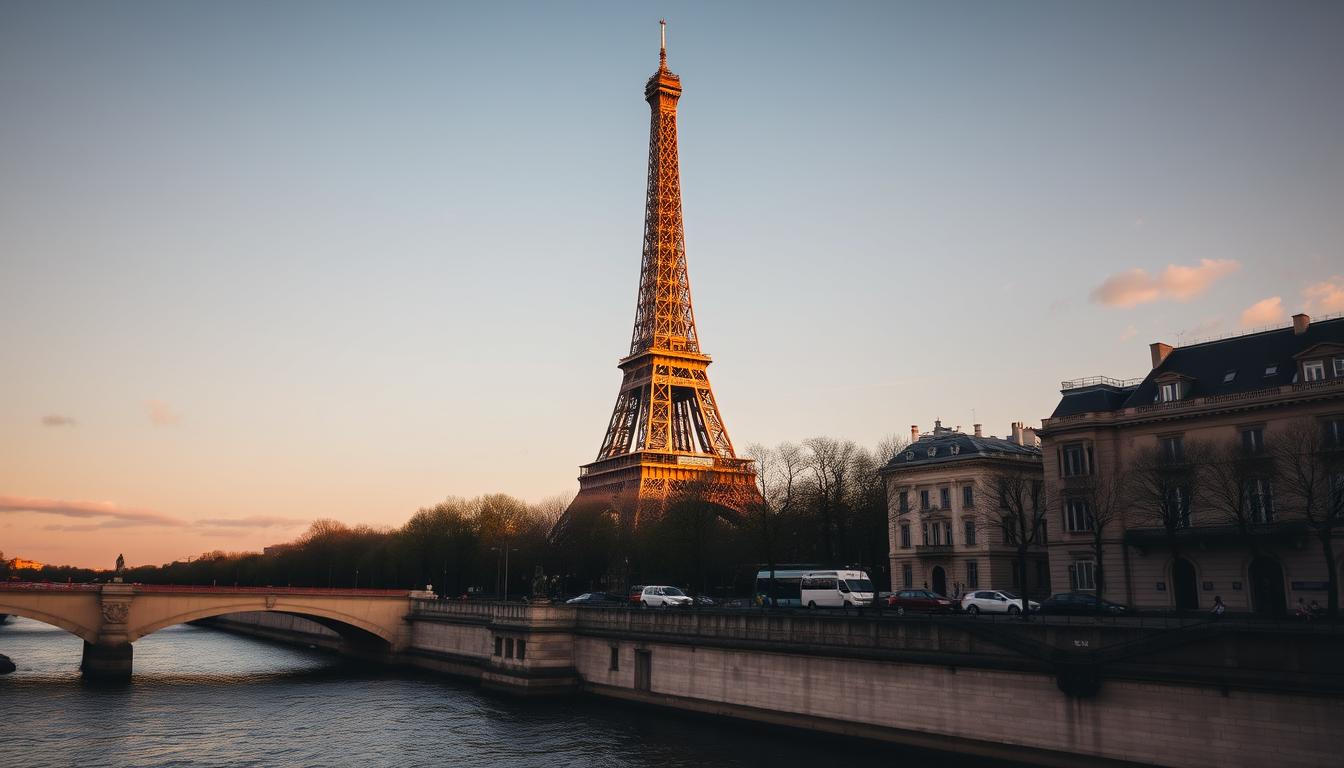As an avid explorer of Europe’s road less traveled, I’ve compiled this guide to 15 remarkable hidden gems across the continent. Each destination offers unique experiences that rival their famous counterparts—often at a fraction of the cost and with twice the charm. Let’s embark on a journey to discover Europe’s best-kept secrets before everyone else does!
Hidden Gems in Western Europe
The fairytale-like town of Colmar, France offers a charming alternative to Paris
1. Colmar, France
Often overshadowed by Paris and the French Riviera, Colmar is a fairytale come to life in France’s Alsace region. This picturesque town blends French and German influences, creating a unique cultural identity that’s evident in its architecture, cuisine, and traditions.
What makes Colmar special is its perfectly preserved medieval old town, where colorful half-timbered houses line canals in an area aptly nicknamed “Little Venice.” The town center feels frozen in time, with buildings dating back to the 13th century creating a storybook atmosphere that rivals more famous European destinations.
- Visit the Unterlinden Museum, housed in a 13th-century convent, to see the famous Isenheim Altarpiece
- Explore the picturesque La Petite Venise district by boat
- Sample local Alsatian wines at traditional winstubs (wine taverns)
Local tip: Visit during December to experience one of Europe’s most enchanting Christmas markets, when the already magical town transforms with twinkling lights and festive decorations. For fewer crowds but equally beautiful scenery, early May offers perfect weather and blooming flowers.
2. Ghent, Belgium
While tourists crowd Brussels and Bruges, Ghent remains Belgium’s best-kept secret. This medieval port city combines historic grandeur with a vibrant, youthful energy thanks to its large student population. Unlike its more famous neighbors, Ghent maintains an authentic, lived-in feel rather than a museum-like atmosphere.
The city center is largely car-free, making it perfect for wandering along canals and cobblestone streets to discover Gothic churches, a 12th-century castle, and guild houses. Ghent’s three-towered skyline creates one of the most impressive urban landscapes in Europe.
- Marvel at the Van Eyck brothers’ masterpiece “The Adoration of the Mystic Lamb” at St. Bavo’s Cathedral
- Explore the imposing Gravensteen Castle, a medieval fortress in the city center
- Experience the city’s thriving food scene at the Holy Food Market, housed in a former chapel
Local tip: Visit during the Ghent Festival (Gentse Feesten) in July to experience one of Europe’s largest cultural festivals, with music, theater, and street performances throughout the city. For a quieter experience, September offers pleasant weather and fewer tourists.
3. Görlitz, Germany
Straddling the German-Polish border, Görlitz is perhaps Europe’s most splendid town you’ve never heard of. Miraculously spared from bombing during World War II, it boasts over 4,000 immaculately preserved architectural treasures spanning 500 years of European styles. Hollywood has discovered this hidden gem, using it as a filming location for movies like “The Grand Budapest Hotel” and “Inglourious Basterds.”
What makes Görlitz truly special is how it feels untouched by mass tourism despite its extraordinary beauty. You can wander through Renaissance courtyards, Baroque facades, and Art Nouveau department stores without fighting crowds or feeling like you’re in a tourist trap.
- Cross the Neisse River via the pedestrian bridge to visit Zgorzelec, Poland—two countries in one easy day trip
- Admire the astronomical clock and climb the tower at the Church of St. Peter and Paul
- Explore the meticulously restored Schönhof, Germany’s oldest Renaissance building
Local tip: Visit during the Altstadtfest (Old Town Festival) in late August to experience traditional music, food, and medieval reenactments. The shoulder seasons of May and September offer pleasant weather and even fewer tourists.
Hidden Gems in Southern Europe
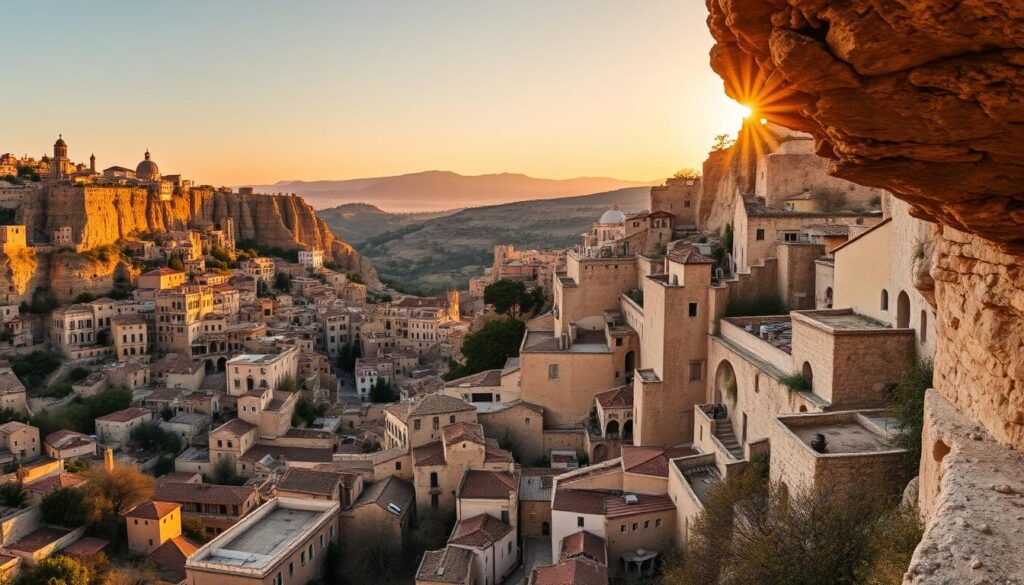
The ancient cave dwellings of Matera, Italy offer a glimpse into Europe’s distant past
4. Matera, Italy
While tourists flock to Rome, Florence, and Venice, the ancient city of Matera in southern Italy offers an equally compelling but far less crowded experience. This extraordinary settlement features cave dwellings (sassi) carved into limestone cliffs that have been continuously inhabited for over 9,000 years, making it one of the oldest living cities in the world.
Once considered “the shame of Italy” for its poverty, Matera has undergone a remarkable transformation and was named a European Capital of Culture in 2019. The labyrinth of stone streets, cave churches with Byzantine frescoes, and ancient homes converted into boutique hotels create an atmosphere unlike anywhere else in Europe.
- Explore the Casa Grotta di Vico Solitario to see how cave-dwelling families lived until the 1950s
- Visit the rock churches with their remarkable Byzantine frescoes
- Watch the sunset from a panoramic viewpoint as the ancient city glows golden
Local tip: Visit in April-May or September-October for ideal temperatures and fewer tourists. Summer can be extremely hot, while winter evenings get surprisingly cold. Don’t miss the opportunity to stay in a cave hotel for a truly unique experience.
5. Kotor, Montenegro
While Croatia’s Dubrovnik struggles with overtourism, neighboring Montenegro offers similar Adriatic beauty with a fraction of the visitors. The fortified coastal town of Kotor, nestled at the end of Europe’s southernmost fjord, combines dramatic natural scenery with Venetian-influenced architecture.
Kotor’s medieval old town is a maze of marbled lanes, hidden squares, and centuries-old churches, all surrounded by impressive defensive walls that climb the steep mountainside. The Bay of Kotor itself, sometimes called Europe’s southernmost fjord, creates a stunning backdrop with its deep blue waters and surrounding mountains.
- Climb the 1,350 steps to San Giovanni Fortress for breathtaking views of the bay
- Explore the maritime history at the Naval Heritage Collection
- Take a boat trip to the artificial island of Our Lady of the Rocks
Local tip: Visit in May or September to enjoy warm weather perfect for swimming but without the summer crowds. If you visit during summer, explore the old town early in the morning before cruise ship passengers arrive.
6. Setenil de las Bodegas, Spain
While millions visit Spain’s Costa del Sol, few venture inland to discover the extraordinary town of Setenil de las Bodegas. What makes this white Andalusian village unique is how it’s built—not on top of rocks, but directly into them. Many houses are literally carved into the overhanging cliffs, with natural rock formations serving as their roofs.
This unusual architecture evolved over centuries as residents expanded caves once used by Muslim settlers. Today, the result is a surreal landscape where streets run beneath massive rock overhangs and buildings seem to emerge organically from the cliffs.
- Wander along Calle Cuevas del Sol and Calle Cuevas de la Sombra, the famous “streets of caves”
- Sample local specialties like chorizo and olive oil in cave-restaurants
- Visit the 12th-century castle with panoramic views of the surrounding countryside
Local tip: Visit during spring (April-May) when wildflowers bloom in the surrounding countryside and temperatures are pleasant. Avoid August when heat can be intense. Combine your visit with nearby Ronda for a perfect day trip from Málaga or Seville.
Discover Southern Europe’s Secret Spots
Planning a Mediterranean getaway? Our Southern Europe Hidden Gems guide includes insider tips for experiencing authentic local culture away from the tourist crowds.
Hidden Gems in Eastern Europe
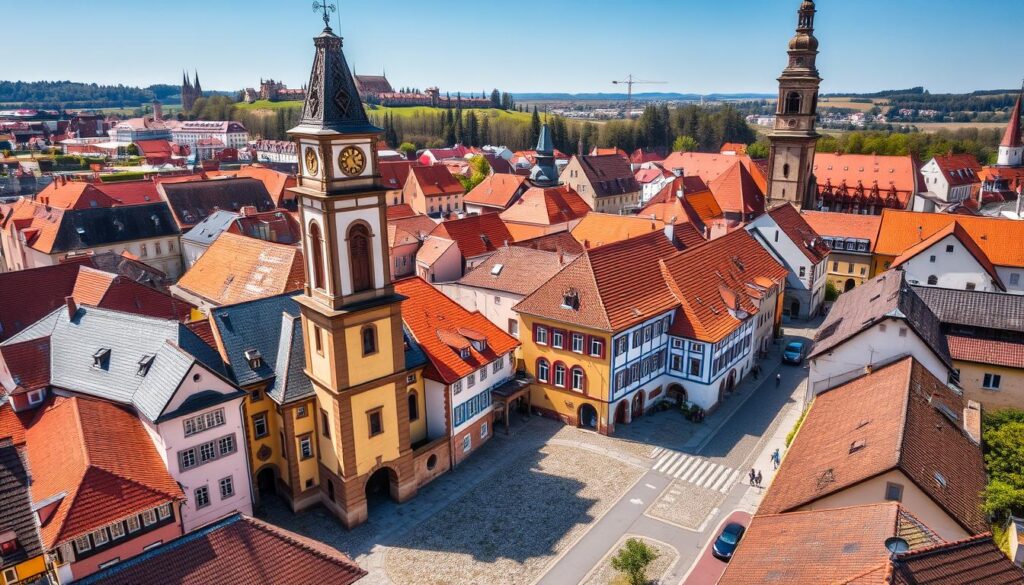
The colorful medieval citadel of Sighisoara, Romania offers a journey back in time
7. Sighisoara, Romania
While Transylvania conjures images of Dracula’s castle, the real gem of the region is Sighisoara—a perfectly preserved medieval citadel that happens to be the birthplace of Vlad the Impaler (the historical figure who inspired the Dracula legend). This UNESCO World Heritage site features a stunning hilltop citadel with colorful burgher houses, defensive towers, and cobblestone streets that have remained largely unchanged since the 16th century.
Unlike Romania’s more visited cities of Bucharest and Brasov, Sighisoara maintains an authentic atmosphere where local life continues amid the medieval surroundings. The citadel’s small size makes it perfect for exploring on foot, discovering hidden courtyards and artisan workshops along the way.
- Climb the 14th-century Clock Tower for panoramic views and visit its history museum
- See the house where Vlad the Impaler was born, now a restaurant and small museum
- Walk the covered Scholar’s Stairs to reach the Church on the Hill
Local tip: Visit during the Medieval Festival in late July to see the citadel come alive with knights, artisans, and traditional performances. For a quieter experience, May and September offer pleasant weather and fewer tourists.
8. Eger, Hungary
While Budapest attracts the lion’s share of Hungary’s visitors, the baroque town of Eger offers a glimpse into the country’s rich history without the crowds. Located in the wine-growing region of northern Hungary, Eger combines thermal baths, historic architecture, and excellent wine culture in a compact, walkable center.
The town is famous for its successful defense against Ottoman forces in 1552, a victory celebrated in the novel “Eclipse of the Crescent Moon.” Ironically, Eger’s most distinctive landmark today is the northernmost Turkish minaret in Europe, a reminder of when the Ottomans eventually conquered the town.
- Explore Eger Castle, site of the famous siege and now home to several museums
- Visit the Valley of the Beautiful Women (Szépasszony-völgy) to sample local wines in traditional cellars
- Relax in the thermal baths at Eger’s historic Turkish Bath
Local tip: Don’t miss trying Egri Bikavér (Bull’s Blood), the region’s famous red wine blend. Visit in late September or early October to experience the grape harvest festivities. The town is easily accessible as a day trip from Budapest, but staying overnight allows you to enjoy the relaxed evening atmosphere.
9. Bohinj, Slovenia
While Lake Bled draws crowds with its island church and clifftop castle, nearby Lake Bohinj offers equally stunning Alpine scenery with a fraction of the visitors. Located within Triglav National Park, Slovenia’s largest protected area, Bohinj is a pristine glacial lake surrounded by towering mountains and lush forests.
What makes Bohinj special is its unspoiled nature and authentic atmosphere. Unlike more developed lake destinations, Bohinj maintains a peaceful character with small villages, traditional farms, and extensive hiking trails rather than souvenir shops and large hotels.
- Take the cable car to Mount Vogel for breathtaking views of the Julian Alps
- Visit the 700-year-old Church of St. John the Baptist with its medieval frescoes
- Swim in the crystal-clear waters or rent a kayak to explore the lake
Local tip: Visit in late May or June when wildflowers carpet the meadows and waterfalls are at their most powerful from snowmelt. September offers warm days, cool evenings, and beautiful fall colors. Winter transforms the area into a quiet ski destination with affordable prices compared to the Alps.
Explore Eastern Europe’s Treasures
Eastern Europe offers incredible value and authentic experiences. Get our comprehensive guide with transportation tips, language essentials, and budget-friendly accommodation options.
Hidden Gems in Northern Europe
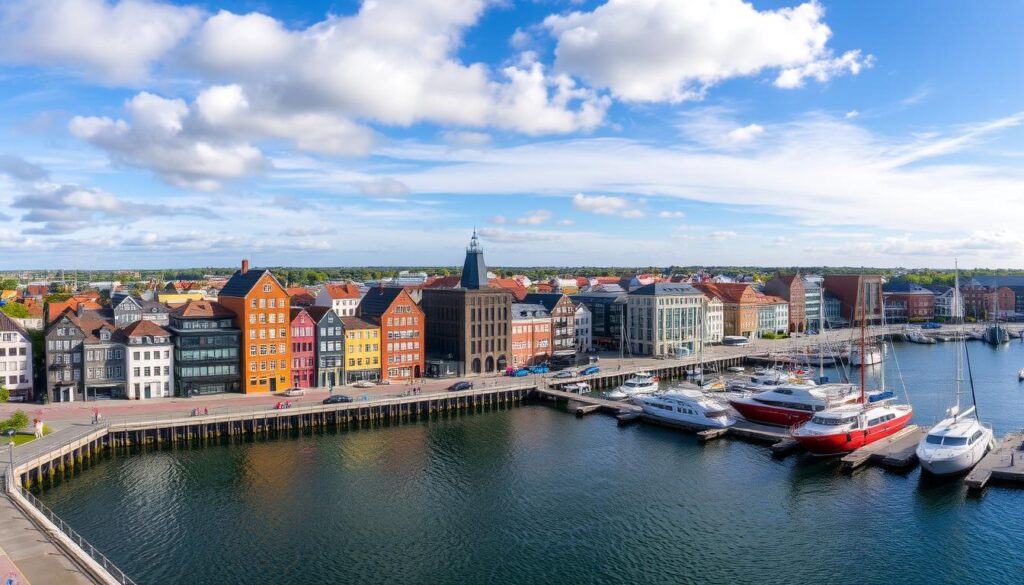
The vibrant waterfront of Aarhus, Denmark combines historic charm with modern design
10. Aarhus, Denmark
While Copenhagen gets all the attention, Denmark’s second-largest city offers a perfect blend of historic charm and cutting-edge design. Aarhus has transformed from a Viking settlement to a vibrant cultural hub with world-class museums, innovative architecture, and a thriving food scene—all while maintaining a relaxed, walkable atmosphere that Copenhagen sometimes lacks.
Named a European Capital of Culture in 2017, Aarhus punches above its weight with attractions like ARoS Art Museum (famous for its rainbow panorama rooftop), the open-air Old Town Museum, and the striking Iceberg residential complex. The city’s compact size means you can explore most highlights on foot or by bicycle.
- Walk through the complete rainbow circle atop the ARoS Art Museum for 360° views of the city
- Step back in time at Den Gamle By (The Old Town), an open-air museum of historic buildings from across Denmark
- Explore the revitalized harbor area with its swimming facilities and modern architecture
Local tip: Visit during the Aarhus Festival in late August/early September when the city comes alive with cultural events. For the best weather, plan your trip between May and September. The city is easily accessible by direct train from Copenhagen.
11. Åland Islands, Finland
Floating between Finland and Sweden, the autonomous Åland archipelago consists of over 6,500 islands that combine Nordic charm with a distinct island culture. Despite being part of Finland, these islands are Swedish-speaking and have their own flag, stamps, and special status within the EU.
What makes Åland special is its unique blend of maritime heritage, unspoiled nature, and independent spirit. The islands offer pristine beaches, red granite cliffs, historic wooden villages, and countless cycling routes connecting it all. With more sunshine hours than mainland Finland, it’s a perfect summer destination for outdoor enthusiasts.
- Explore the Maritime Quarter in Mariehamn, with its traditional boat-building workshops
- Visit the impressive Kastelholm Castle and the nearby open-air museum
- Cycle between islands on the archipelago trail, using the network of small ferries
Local tip: The islands are most vibrant from June to August, with many attractions closed in winter. Try the local specialty, Åland pancakes with stewed plums and whipped cream. Ferries from both Finland and Sweden make the islands easily accessible as part of a broader Nordic itinerary.
12. Saaremaa, Estonia
While Tallinn’s medieval old town draws visitors to Estonia, the country’s largest island remains wonderfully under-discovered. Saaremaa combines pristine nature with fascinating history, including well-preserved medieval churches, traditional windmills, and mysterious meteorite craters.
What makes Saaremaa special is its authentic rural character and strong cultural identity. The island’s isolation has preserved unique traditions, architecture, and even dialect. Stone fences, thatched roofs, and juniper forests create a landscape that feels unchanged for centuries, while the island’s spa towns offer modern wellness facilities.
- Explore the 14th-century Kuressaare Episcopal Castle, one of the best-preserved medieval fortresses in the Baltics
- Visit the Kaali meteorite crater, site of an ancient impact that entered local mythology
- Discover the traditional windmills of Angla Heritage Culture Center
Local tip: Visit during midsummer (late June) to experience traditional Estonian celebrations with bonfires and folk customs. The island is accessible by ferry from the mainland, with regular connections making it easy to include in an Estonia itinerary.
Island Hidden Gems in Europe
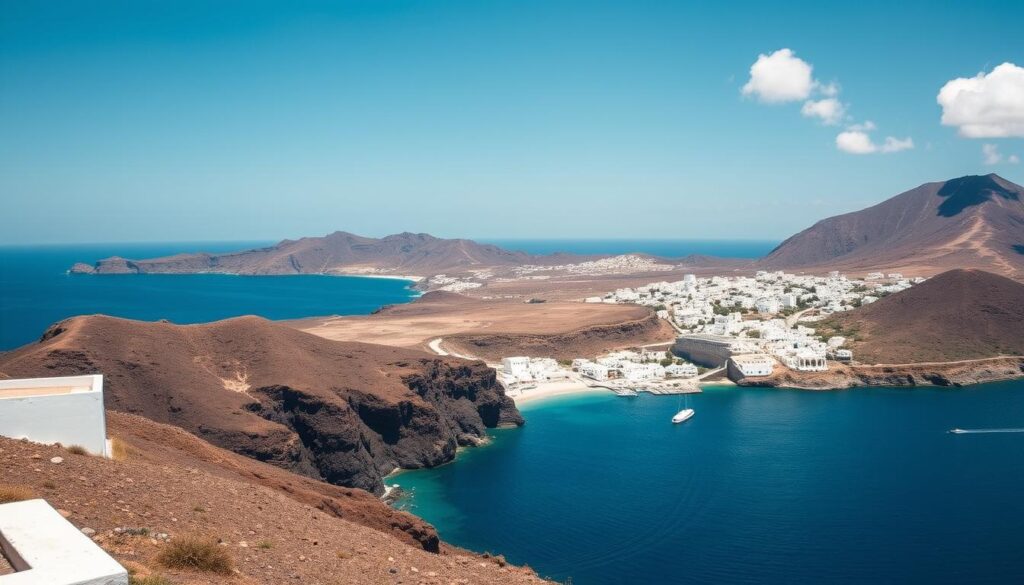
The volcanic landscape of Nisyros Island offers a dramatic alternative to Greece’s more famous islands
13. Nisyros, Greece
While Santorini and Mykonos struggle with overtourism, the small Dodecanese island of Nisyros offers authentic Greek island life centered around an active volcano. This geological wonder has shaped both the landscape and culture of the island, creating a destination unlike any other in the Aegean.
What makes Nisyros special is its dramatic volcanic caldera, which visitors can walk into to see bubbling mud pots and sulfur vents up close. The island’s whitewashed villages, built from volcanic stone, cling to hillsides and offer panoramic views of the surrounding sea. With no airport and limited ferry connections, Nisyros remains blissfully uncrowded even in peak summer.
- Walk into the Stefanos crater to experience the otherworldly landscape of an active volcano
- Explore the medieval Knights’ Castle overlooking Mandraki, the main port
- Visit the monastery of Panagia Spiliani, built into a cave above Mandraki
Local tip: Visit in late May or September to enjoy warm weather without summer crowds. The island is accessible by ferry from Kos, making it an easy side trip. Stay in the village of Nikia for the most spectacular views over the caldera.
14. Formentera, Spain
Just a short ferry ride from party-centric Ibiza lies Formentera, a tranquil island with Caribbean-like beaches and a bohemian spirit. The smallest of Spain’s Balearic Islands has managed to avoid mass tourism through strict development regulations, preserving its natural beauty and laid-back atmosphere.
What makes Formentera special is its pristine beaches with powdery white sand and crystal-clear turquoise waters that rival any tropical paradise. The island has no airport and limited accommodation, helping it maintain its unspoiled character. Extensive cycling paths and nature reserves make it perfect for eco-conscious travelers.
- Relax on Playa de Ses Illetes, consistently ranked among Europe’s best beaches
- Cycle along the green routes that connect the island’s main points of interest
- Visit the La Mola lighthouse, perched on dramatic cliffs at the island’s eastern end
Local tip: The island is busiest in July and August when day-trippers arrive from Ibiza. Visit in June or September for perfect beach weather without crowds. Renting a bicycle is the best way to explore, as the island is only 20 km long.
15. Faroe Islands, Denmark
Halfway between Iceland and Norway, this self-governing archipelago belonging to Denmark offers some of Europe’s most dramatic landscapes without the crowds of its Nordic neighbors. The 18 volcanic islands feature towering sea cliffs, cascading waterfalls, and grass-roofed villages that seem plucked from fantasy novels.
What makes the Faroes special is their otherworldly beauty and strong cultural identity. Despite their remote location, the islands maintain vibrant traditions, including chain dancing, boat festivals, and a thriving music scene. The unique light conditions and ever-changing weather create a photographer’s paradise where the landscape transforms hourly.
- Hike to the hanging lake of Sørvágsvatn, which creates an optical illusion of floating above the ocean
- Visit the picturesque village of Gjógv with its natural harbor set in a deep gorge
- Take a boat trip to the Vestmanna bird cliffs to see puffins and other seabirds
Local tip: Visit between May and August for the best weather and to see puffins nesting on the cliffs. The islands are accessible by direct flights from Copenhagen, Edinburgh, and Bergen. Renting a car is essential for exploring, and underwater tunnels connect many of the islands.
Planning Your Hidden Gems European Adventure

Careful planning helps you make the most of Europe’s lesser-known destinations
Best Times to Visit Europe’s Hidden Gems
One of the greatest advantages of visiting hidden gems is flexibility with timing. While famous destinations often become unbearably crowded during summer months, these lesser-known spots typically offer more breathing room year-round. That said, here are some general guidelines:
Spring (April-May)
Perfect for exploring medieval towns and countryside destinations. Flowers are blooming, temperatures are pleasant, and tourist numbers remain low. Ideal for Colmar, Sighisoara, and Bohinj.
Early Summer (June)
Great for northern destinations and islands before peak season begins. Enjoy long daylight hours in places like Aarhus, the Åland Islands, and Saaremaa.
September
Perhaps the ideal month for most European hidden gems. The weather remains warm, the sea is perfect for swimming, and summer crowds have departed. Excellent for Mediterranean destinations like Kotor and Nisyros.
Winter (December)
Consider Central European destinations like Görlitz and Colmar for magical Christmas markets and snow-dusted medieval architecture.
Transportation Tips
Reaching hidden gems often requires more planning than visiting major cities, but the journey becomes part of the adventure:
- Consider regional rail passes instead of point-to-point tickets for flexibility
- Research local bus networks, which often reach places trains don’t
- Rent a car for rural destinations, especially in Eastern and Southern Europe
- Look for budget airline routes to secondary airports near hidden gem destinations
- Book ferry tickets in advance for island destinations, especially during summer
Accommodation Strategies
One of the joys of visiting hidden gems is the opportunity to stay in unique, locally-owned accommodations:
- Book directly with small hotels and guesthouses when possible for better rates
- Consider agritourism stays in rural areas for authentic experiences
- Look for heritage properties (converted monasteries, castles, etc.) for memorable stays
- Reserve accommodations further in advance for islands and small towns with limited options
- Use booking platforms that specialize in unique properties rather than chain hotels
Cultural Considerations
Visiting lesser-known destinations comes with added responsibility to respect local communities:
- Learn a few basic phrases in the local language—especially important in places less accustomed to international visitors
- Research local customs and etiquette before arriving
- Support local businesses rather than international chains
- Be mindful of photography, particularly in small communities
- Consider the impact of your visit and practice sustainable tourism
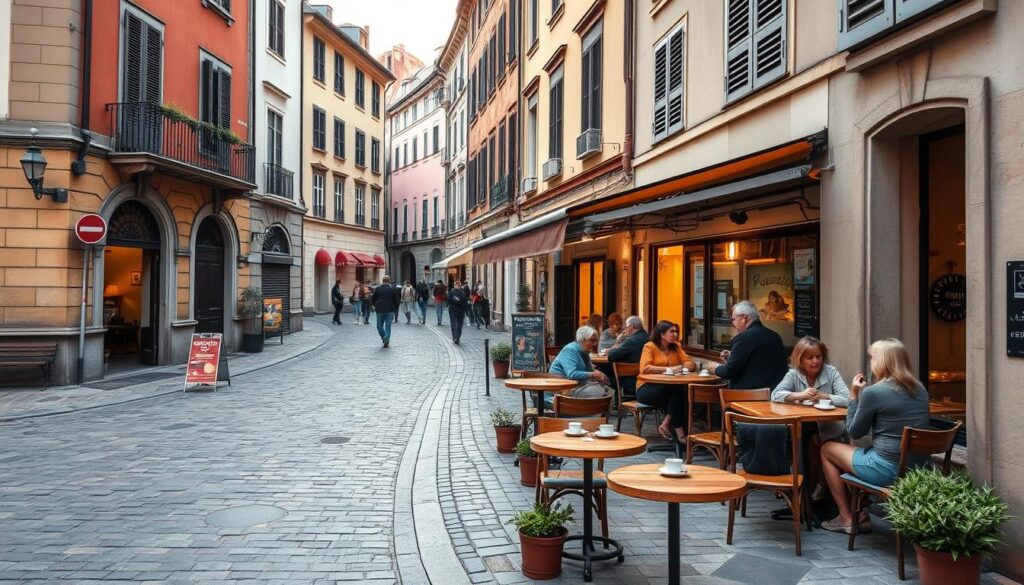
Enjoying local cafe culture is part of the authentic experience in Europe’s hidden gems
Why Choose Hidden Gems Over Tourist Hotspots
Authentic Experiences
Hidden gems offer genuine cultural immersion where local life continues uninterrupted by mass tourism. You’ll have more meaningful interactions with residents and discover traditions that remain vibrant and authentic.
Better Value
Lesser-known destinations typically offer significantly better value for accommodations, dining, and activities compared to famous tourist hotspots. Your travel budget stretches further while often enjoying higher quality experiences.
Room to Breathe
Escape the frustration of overcrowded attractions and enjoy the luxury of experiencing beautiful places at your own pace. Photograph stunning vistas without crowds, find seating at charming cafes, and truly relax.
Europe’s hidden gems offer the perfect balance of cultural richness, natural beauty, and authentic experiences without the drawbacks of overtourism. By venturing beyond the well-worn tourist path, you’ll discover the true heart of Europe and create memories that few other travelers share.
Whether you’re drawn to medieval towns, pristine islands, or cultural hubs, these 15 underrated destinations prove that Europe’s magic extends far beyond its famous capitals. Pack your sense of adventure and prepare to discover the continent’s best-kept secrets in 2024!
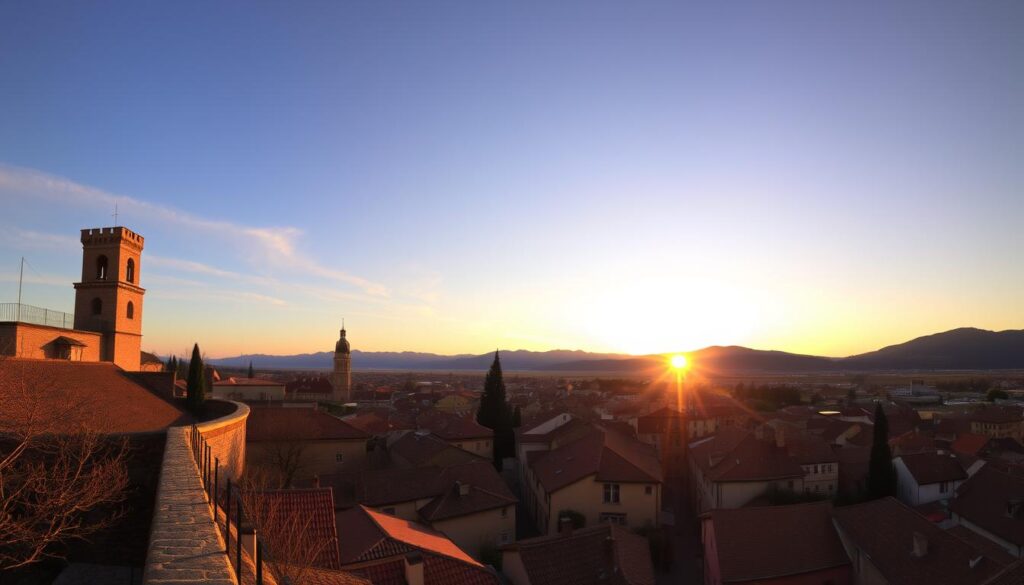
Discover the magic of Europe’s hidden gems before they become the next tourist hotspots

